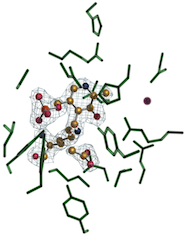The Webster Centre for Infectious Diseases held its second biennial Symposium at the University of Otago in Dunedin April 23-24. The Symposium was well attended with participation of more than 80 infectious diseases researchers from at least ten institutions throughout New Zealand. Two main themes were discussed in this years conference: mycobacterial diseases and vaccine discovery and development.
Vice-Chancellor David Skegg opened the Symposium with commentary on the relevance of infectious diseases to human health. The meeting included talks on varied aspects of infectious diseases research ranging from chemistry and biochemistry to microbiology, immunology, genetics, and public health. Illustrative of the broad range of topics presented, the first talk was given by Professor Warren Tate, on the biochemistry of frame shifting in proteins. This was followed later by Dr. Sue Huang from ESR at the National Centre for Biosecurity and Infectious Diseases spoke of influenza surveillance. Dr. Ronan O'Toole from Victoria spoke on screening for antimycobacterial compounds, while Professor Frank Griffin, Microbiology and Immunology, University of Otago discussed the genetics of disease susceptibility in deer. Dr. Stephen Chambers from University of Otago, Christchurch addressed the use of gas chromatography in infectious diseases diagnosis. Public health related infectious diseases research was well covered by talks from Professor Philip Hill, Director for the Centre for International Health, University of Otago and Dr. Michael Baker from Otago, Wellington.
Keynote speakers
The Symposium had two international keynote speakers, both from the United States. Clifton E. Barry, III, PhD the Chief of the Tuberculosis Research Section at the National Institute of Health. He spoke on tuberculosis related research and C. Jo White, M.D., Chief Medical Officer of VGX Pharmaceuticals, spoke on key steps required to license a vaccine for patient delivery.
Clifton E. Barry, III, Ph.D., is currently Chief of the Tuberculosis Research Section at the National Institutes of Health in the Institute of Allergy and Infectious Disease. He received his Ph.D. in organic chemistry in 1989 from Cornell University with Tadhg Begley. Following postdoctoral research with Craig Townsend at Johns Hopkins University, Dr. Barry joined NIAID in 1991 and was tenured in 1998. His research group works on all aspects of tuberculosis drug discovery and genomics and includes a clinical trials program in patients with highly drug-resistant disease in South Korea. Dr. Barry has authored more than 100 research publications in tuberculosis since entering the field.
C. Jo White, M.D., has 21 years of clinical and product development experience in the pharmaceutical industry. Her experience has been focused in the areas of infectious diseases, primarily in vaccine development. Over the past 21 years she has designed and conducted over 40 Phase 1-4 clinical trials, filed 6 BLA/MAAs and has licensed 4 different vaccines: Certiva® (DTaP vaccine), Varivax® (live, attenuated varicella vaccine), VAQTA® (hepatitis A vaccine), NeisVax® (conjugated meningococcal B vaccine) in both the United States and Europe. She is presently the Chief Medical Officer of VGX Pharmaceuticals, Inc. and is developing a small molecule for use in treating rheumatoid arthritis (Phase I) and a DNA vaccine delivered by electroporation for treatment of cervical neoplasias due to human papilloma virus (Phase I).

An electron density map of LLP and an acetate molecule in the active site of alanine racemase from Bacillus anthracis.
Related documents
- 2009 Webster Centre Symposium programme (PDF 4.5 MB)